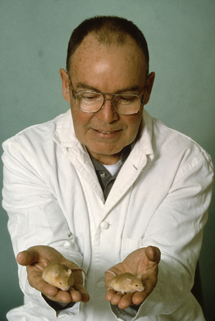An investigation of the predictors of bone mineral density and response to therapy with alendronate in osteoporotic men.
Document Type
Article
Publication Date
2003
Keywords
Alendronate, Biological-Markers, Body-Mass-Index, Bone-Density, Human, Male, Medical-Records, Middle-Aged, Multivariate-Analysis, Osteoporosis, Prognosis, Spinal-Fractures, SUPPORT-NON-U-S-GOVT, Testosterone
First Page
5759
Last Page
5765
JAX Source
J Clin Endocrinol Metab 2003 Dec; 88(12):5759-65.
Abstract
Male osteoporosis is an important disease, with 25-30% of all hip fractures occurring in men. In a recent randomized, placebo-controlled study of osteoporotic males, alendronate 10 mg daily for 2 yr led to significant increments in bone mineral density (BMD), of a similar magnitude to those observed in postmenopausal women. In this study, specimens collected at intervals during the recent trial of alendronate in male osteoporosis, from 197 of the original 241 participants, were assayed for testosterone, estradiol, IGF-I, IGF binding protein 3 (IGFBP-3), bone-specific alkaline phosphatase [BSAP (serum)], and N-telopeptide of type I collagen corrected for creatinine [NTx (urine)]. Together with fracture and densitometry data from the original study, relationships were examined between BMD and serum IGF-I, IGFBP-3, testosterone, estradiol, BSAP, and urine NTx, both at baseline and during treatment with alendronate, to gain possible insights into the pathogenesis of male osteoporosis. Statistically significant (P
Recommended Citation
Drake WM,
Kendler DL,
Rosen CJ,
Orwoll ES.
An investigation of the predictors of bone mineral density and response to therapy with alendronate in osteoporotic men. J Clin Endocrinol Metab 2003 Dec; 88(12):5759-65.


